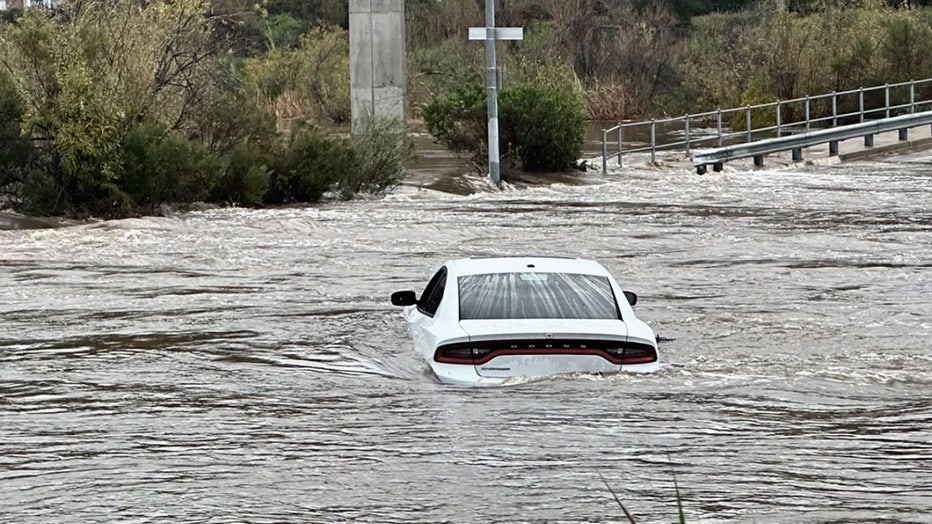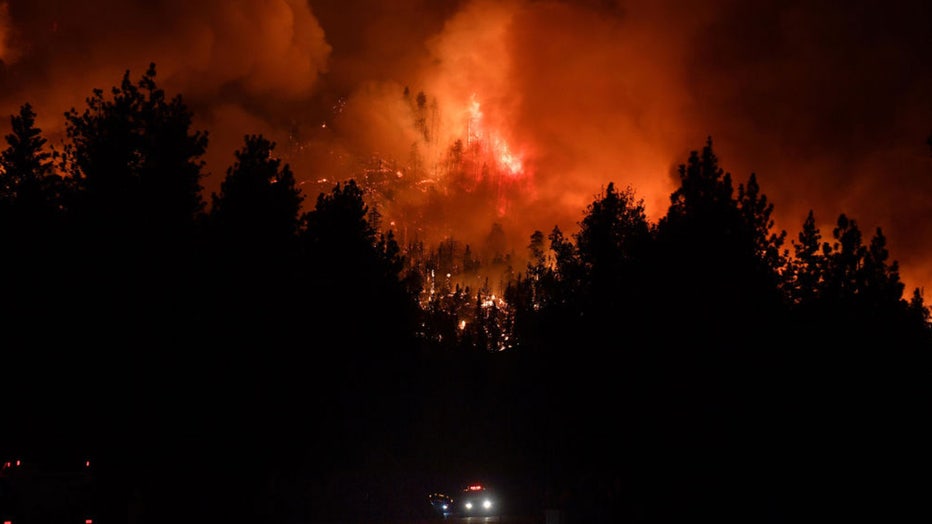How winter's atmospheric river storms could supercharge California’s wildfire season

Atmospheric river rains led to lush vegetation which could mean a disastrous fire season
Record rains in December and January courtesy of the atmospheric river is leading to lush greenery across California. Officials fear that as plants dry out in spring they will become fuel for wildfires.
Most people probably thought the danger from the parade of deadly atmospheric river storms that have ravaged California this winter passed after the floodwater receded, but experts said the danger will actually continue through the fire season.
An atmospheric river is a narrow corridor of concentrated water vapor in the sky. One can carry as much water as 7 to 15 Mississippi Rivers from the tropics to the West Coast, according to the USGS. Storms powered by the atmospheric rivers drop excessive amounts of rain and snow compared to an average storm.
This year, the storms dropped historic amounts of rain and snow across the Golden State over a three-week period from December to January. State officials blamed the strong storms for the deaths of more than 20 people, including a 5-year-old boy who was washed away from his mother on his way to school.
WHAT IS AN ATMOSPHERIC RIVER? EARTH'S LARGEST FRESHWATER RIVERS IN THE SKY

This was just one car out of many swept away by floodwaters flowing over roads. (NWS / NOAA)
DRAMATIC IMAGES SHOW DEVASTATION FROM ONSLAUGHT OF ATMOSPHERIC RIVERS SLAMMING CALIFORNIA
Even after the rivers returned to their banks, the mudslides stabilized, and the sinkholes were shored up, the danger isn't over. Attention now turns to what is growing across hills, mountains and valleys – spectacular desert flower blooms not seen in years and lush green brush happily drinking in the moisture after years of drought.
In 2017, the U.S. Geological Survey studied the relationship between atmospheric rivers and the severity of wildfire season.
"The heavy precipitation that atmospheric rivers bring increases soil moisture, which in turn spurs vegetation growth and temporarily inhibits fires," the authors of the study wrote. "However, after a couple of months, the vegetation dries out and provides more fuel to feed fires than would normally be available, resulting in a larger wildfire season."
HOW TO WATCH FOX WEATHER ON TV

These desert wildflowers blooming in January and February are "unusual," according to the Anza-Borrego Desert History Association which tracks the blooms. (Paulette Donellon / FOX Weather)
Tale of two seasons
California collects, on average, 75% of the state’s annual snow and rain from November to March, according to the California Office of Environmental Health and Hazard Assessment. About 50% of the precipitation falls from December to February. The atmospheric river boosts the moisture content of each storm.
That means the bumper crop of vegetation will dry out starting in April. The thick green brush that Californians are enjoying right now dries out. Hills brown and the "spring flowers" become fuel for wildfires.
"A lot of the rain and then the days that follow that warm up, you're going to have a lot of vegetation growth that could be a little challenging or help with the activity that we are experiencing during our fire months," Cal Fire Capt. Chris Bruno told FOX 2 KTVU.
A satellite picture from January 2023 showed the green landscape after the series of storms. The mountains were topped with snow which will continue to water the greenery as the snow melts. Compare that picture to one before the storms started. In July 2022, much of the state, except for irrigated farms, was dry and brown after years of drought.
WHAT CALIFORNIA'S EXCESSIVE SNOW MEANS FOR SPRING AND THE MEGADROUGHT
"Atmospheric rivers can increase the area burned by fires in the year following an event, particularly in the most arid parts of the interior Southwest," the authors of the USGS study wrote.
Mario Sanchez, a long-time resident of the foothills near San Jose, said he's noticed how fast things can change.
"It definitely dries out pretty quickly and goes from green to brown," Sanchez told FOX 2 KTVU.
Power lines and people
Sanchez said one thing he keeps a close eye on is the high-tension power lines that run through the area. They can spark wildfires when windstorms blow through.
"There are some high power lines that run through here, and they do a good job of maintaining them," Sanchez said of the utility company. "I've seen actually the helicopters out here, the helicopter crew coming out here and checking the lines."
WHY FIREFIGHTERS ARE FIGHTING WILDFIRES WITH FIRE

FILE - In an aerial view, the remains of homes and businesses that were destroyed by the Dixie Fire are visible on Sept. 24, 2021, in Greenville, California. (Justin Sullivan/Getty Images)
Some utility companies like Pacific Gas and Electric are hardening their network of lines against fire by burying them at a tremendous expense. The strategy is part of the company’s Community Wildfire Safety Program, which they have said reduces the ignition risk by 99% in that location.
Sanchez and his neighbors harden their home locally by creating so-called "defensible space." The California Department of Forestry and Fire Protection (Cal Fire) calls that space a buffer between a building on your property and flammable grass, trees, shrubs and wildland around it.
WHAT EXCESS RAIN MEANS FOR CALIFORNIA BURN SCARS

FILE - Fire equipment rushes up Highway 38 as the El Dorado Fire burns in heavy timber near Jenks Lake Road W north of Angelus Oaks Thursday night Sept. 17, 2020. (Will Lester/MediaNews Group/Inland Valley Daily Bulletin via Getty Images)
Although wildfires can happen year-round, historically the Southern California fire season starts in late April and runs through October, according to the Western Fire Chiefs Association. The Northern California season runs from July through October.

